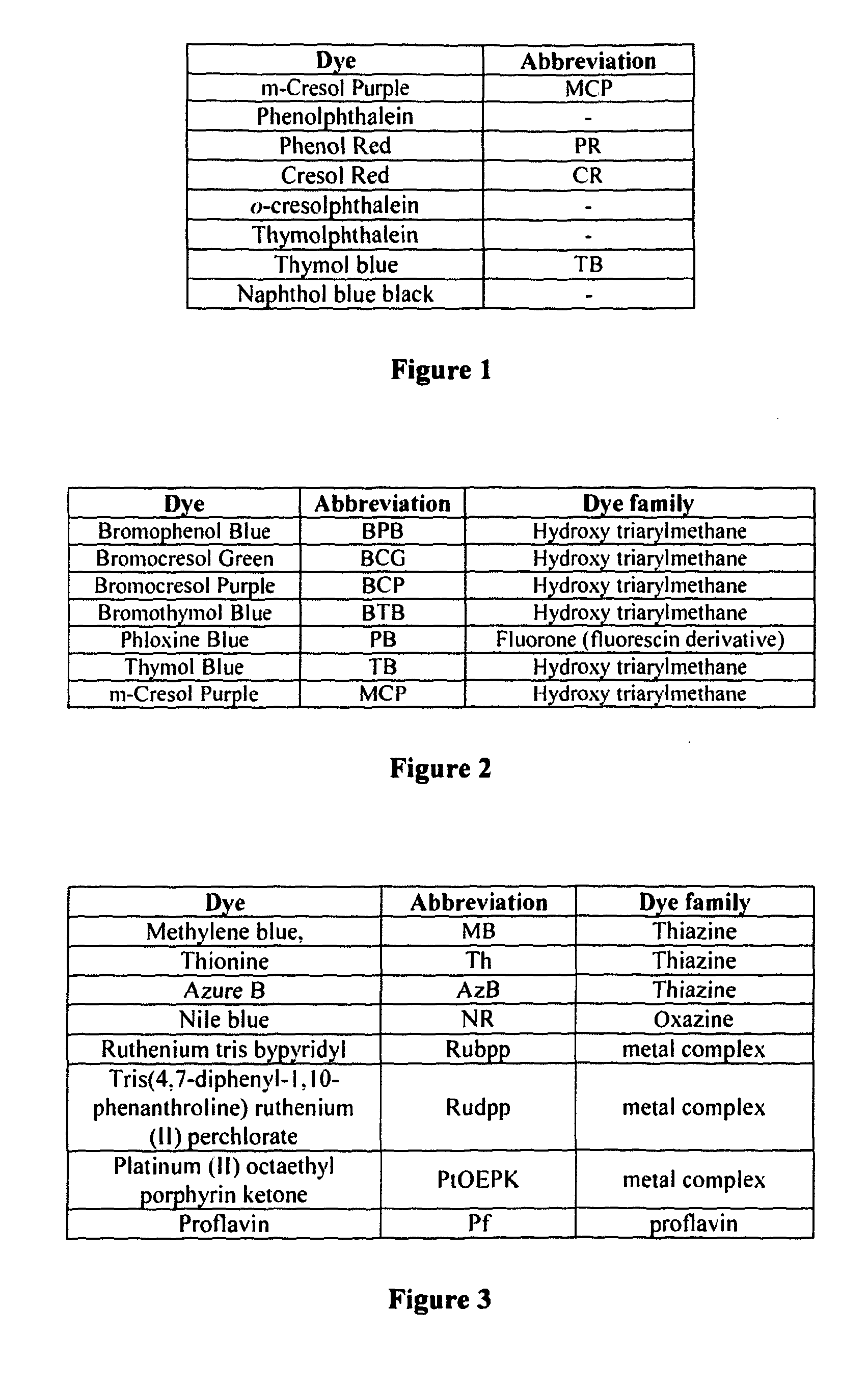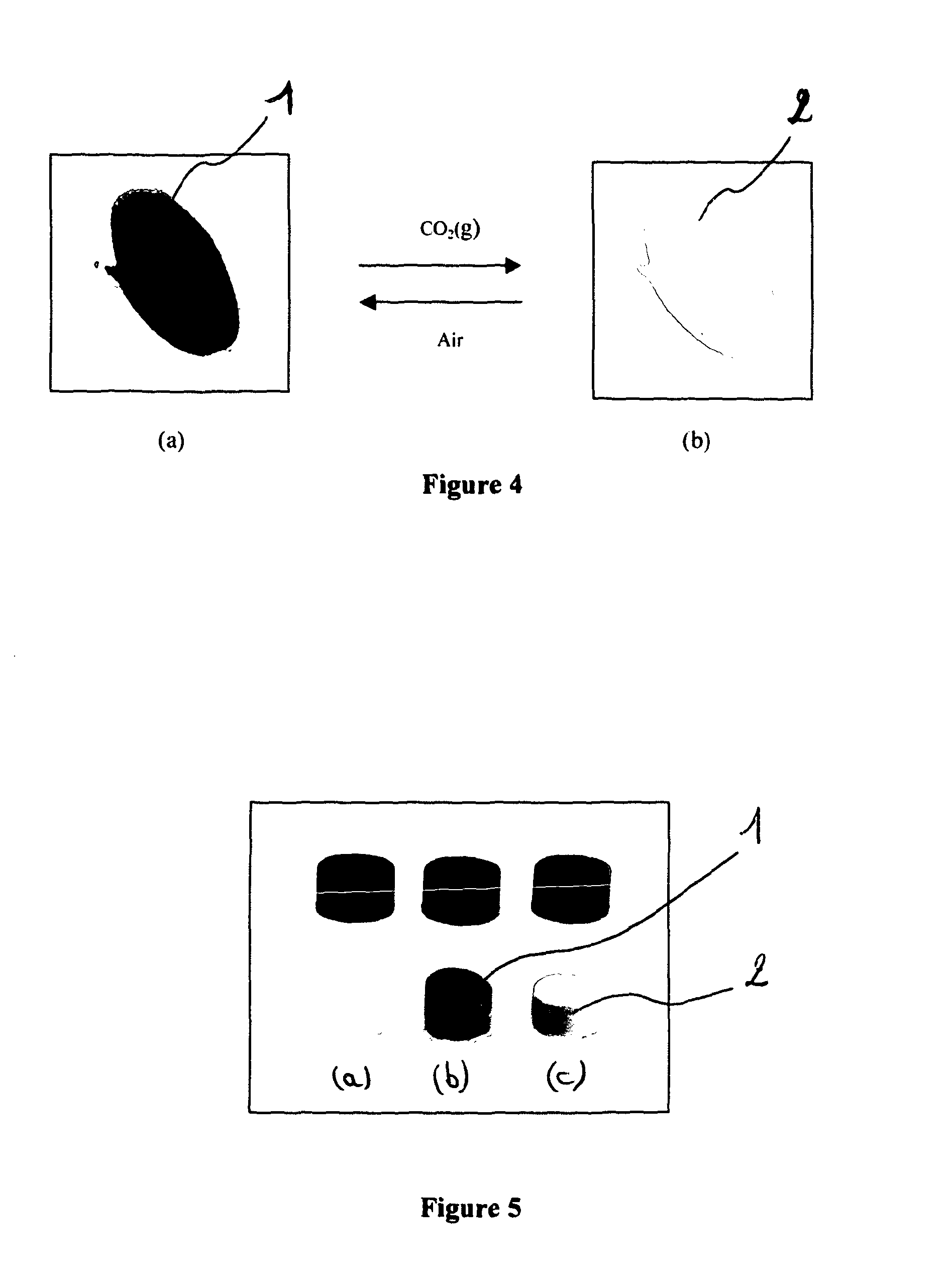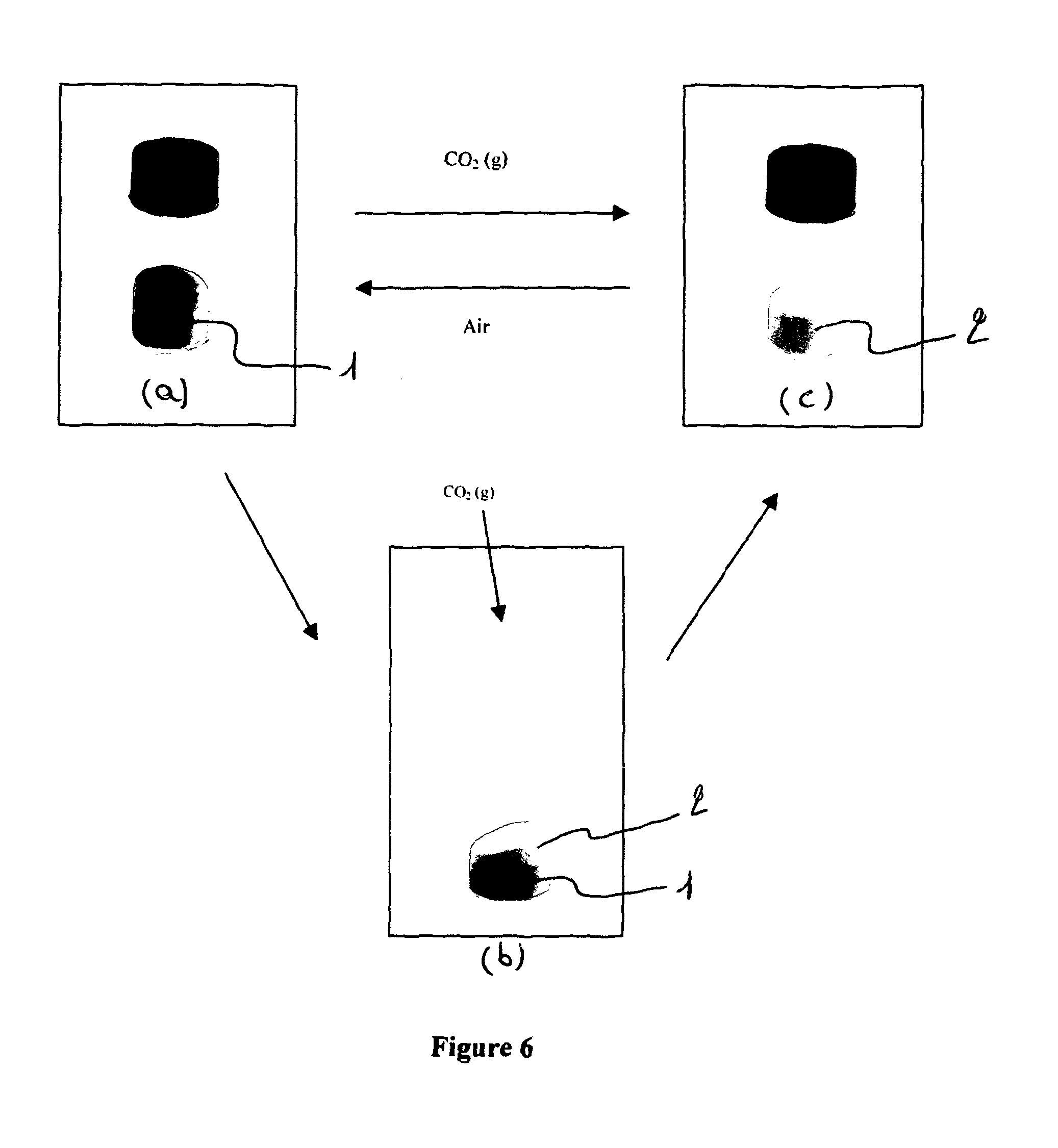Intelligent Pigments and Plastics
- Summary
- Abstract
- Description
- Claims
- Application Information
AI Technical Summary
Benefits of technology
Problems solved by technology
Method used
Image
Examples
Embodiment Construction
Preparation
[0117]Silica (silicon dioxide) and alumina (aluminium oxide) were chosen as inorganic substrates for preparation of the indicators. Silica pigment was found to be a particularly suitable inorganic substrate because of its wide utilisation as a polymer filler, low cost, ready availability, ease of handling, safety, and lack of colour (white). Indicators were prepared using both hydrophobic pigments (silica or alumina), and hydrophilic pigments (silica or alumina).
[0118]Titania was also used in connection with the preparation of oxygen-sensitive indicators. Titania was chosen because it is a semiconducting material which can act as a photocatalyst in the reduction and thus the activation of certain oxygen-sensitive dyes.
[0119]A variety of reactive dyes were employed to make the indicators. The choice of dye in each case was based upon the substance to be detected. The Tables presented in FIGS. 1, 2 and 3 show the dyes that were used in the preparation of carbon dioxide-sens...
PUM
| Property | Measurement | Unit |
|---|---|---|
| Temperature | aaaaa | aaaaa |
| Time | aaaaa | aaaaa |
| Time | aaaaa | aaaaa |
Abstract
Description
Claims
Application Information
 Login to View More
Login to View More - R&D
- Intellectual Property
- Life Sciences
- Materials
- Tech Scout
- Unparalleled Data Quality
- Higher Quality Content
- 60% Fewer Hallucinations
Browse by: Latest US Patents, China's latest patents, Technical Efficacy Thesaurus, Application Domain, Technology Topic, Popular Technical Reports.
© 2025 PatSnap. All rights reserved.Legal|Privacy policy|Modern Slavery Act Transparency Statement|Sitemap|About US| Contact US: help@patsnap.com



